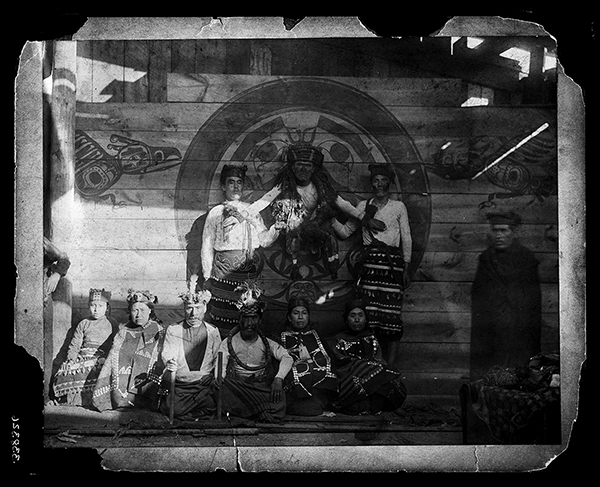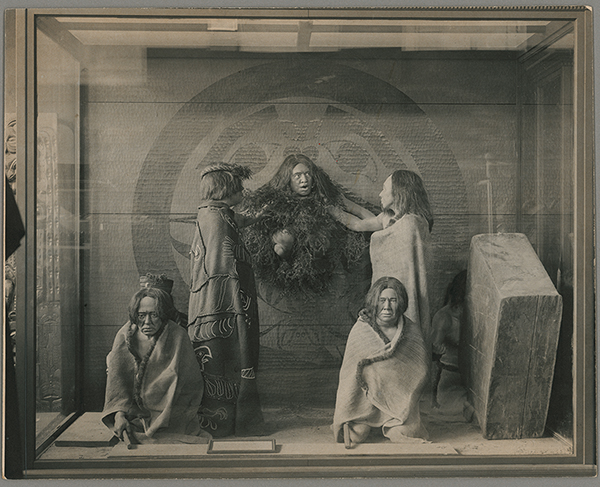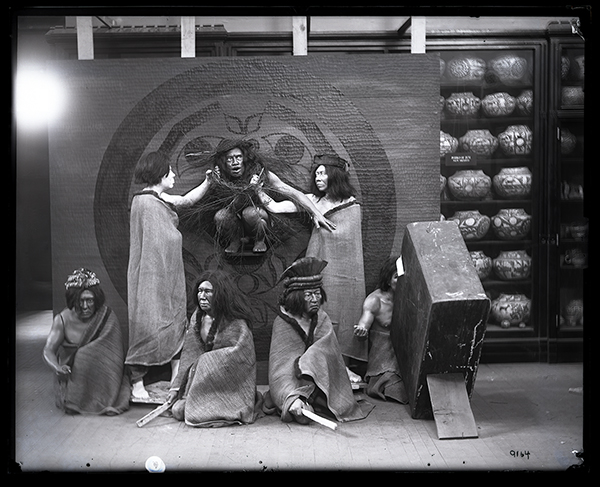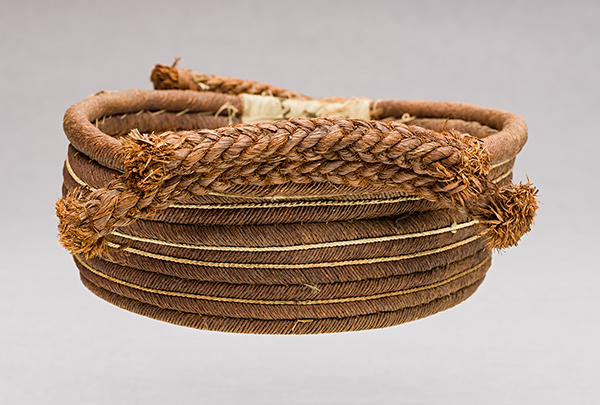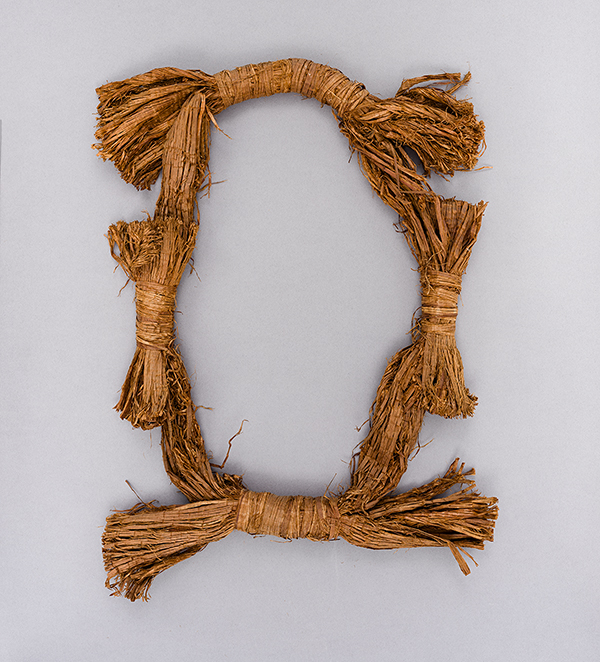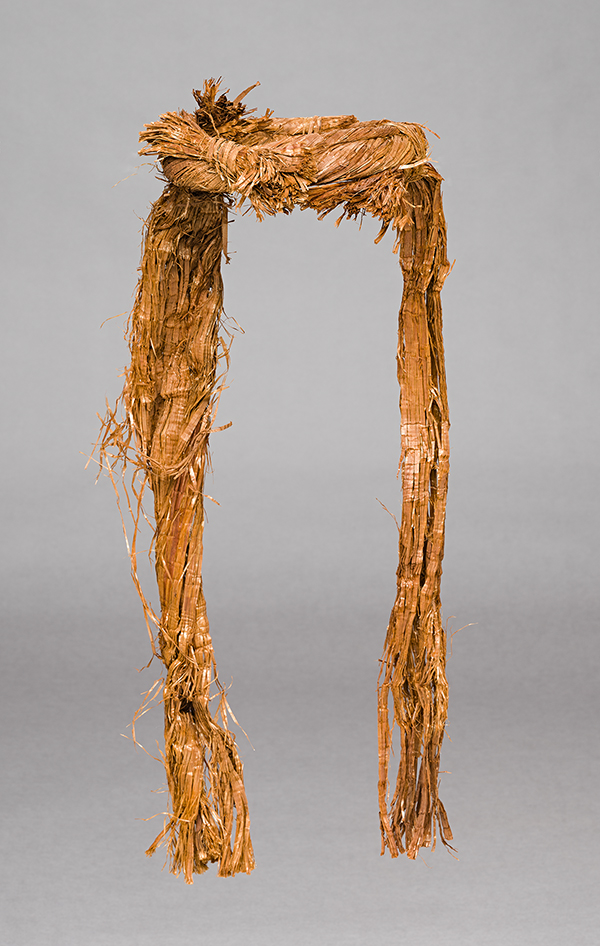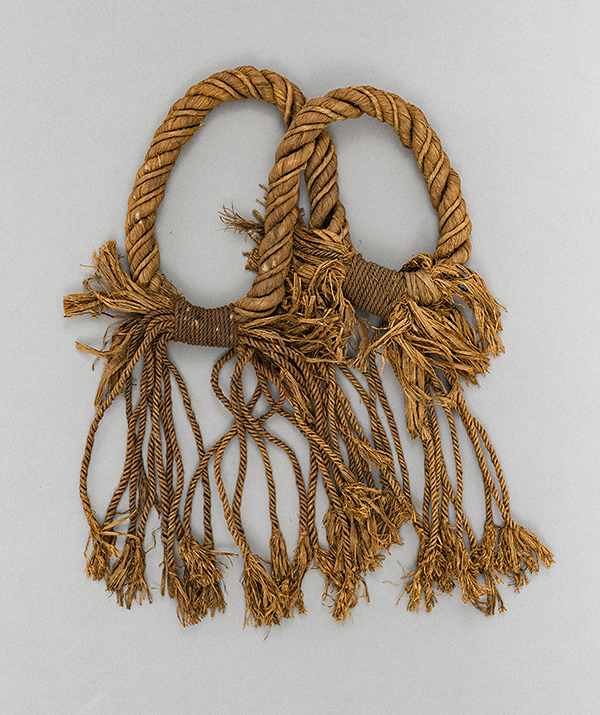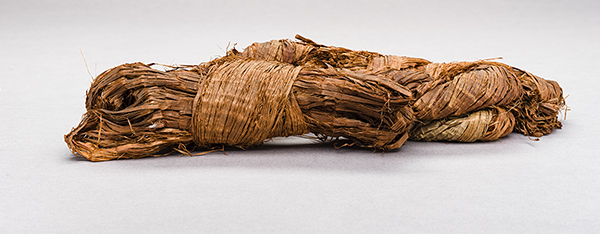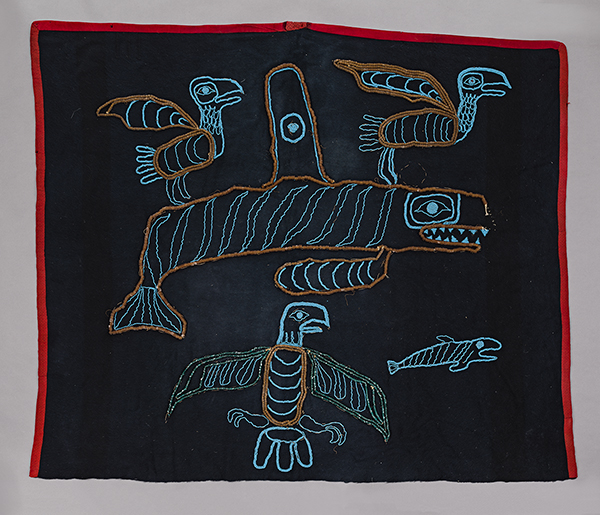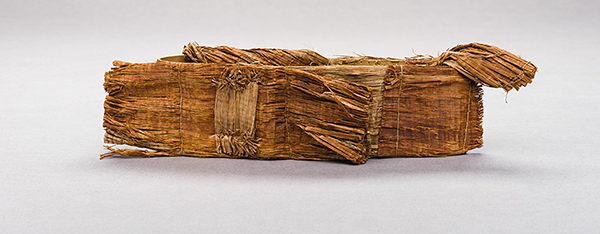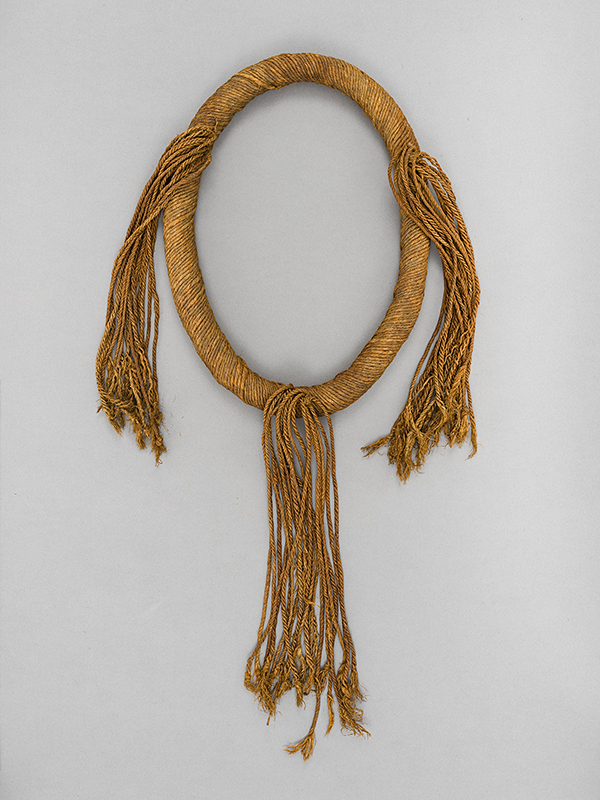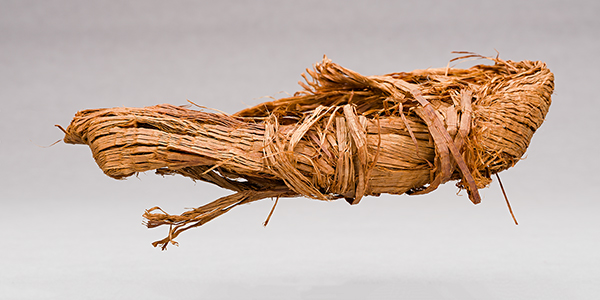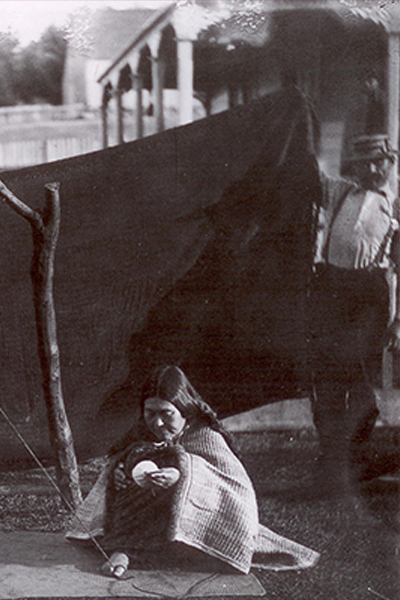CHAPTER VI: 1895-96 PREPARING THE BOOK
Producing the Hamat’sa Life Group
Complex “life groups”—full-sized dioramas with multiple mannequins—made their North American debut at the Chicago World’s Fair. Afterward, both the American Museum of Natural History in New York City and the U.S. National Museum (now the Smithsonian Institution) in Washington, DC, commissioned Franz Boas to prepare life groups for them. For the latter, he chose a scene in which a Hamat̕sa initiate emerges from a mawił (dance screen). Boas provided two key sources to the museum’s display staff: a photograph of such a scene taken at the Chicago fair, which inspired the exhibit’s painted screen (Fig. 1); and a set of photos in which Boas himself—having witnessed the dance in both Chicago and Fort Rupert—demonstrated the proper poses for each figure (see video above). The first version of the group was dressed in materials already housed in the National Museum (Fig. 2); this was shown at the 1895 Atlanta World’s Fair (Fig. 3). That year, George Hunt collected additional cedar-bark head and neck rings, which adorned the final group as installed in the museum and as published in the 1897 book.
Regalia Worn by Life Group Mannequins:
Cedar-bark head and neck rings collected by Franz Boas and George Hunt in 1894–95 and used to adorn the final Hamat̕sa life group mannequins. The unusual beaded blanket was already in the U.S. National Museum and lacks clear accession data (it may have been collected by James Swan in Alaska before 1876).
Catalog numbers 169111, 175492, 175509, 175511, 175526, 175493, 175521, ET00661, ET00667, and ET00668, Department of Anthropology, Smithsonian Institution, Photographs by James Di Loreto and Fred Cochard.

